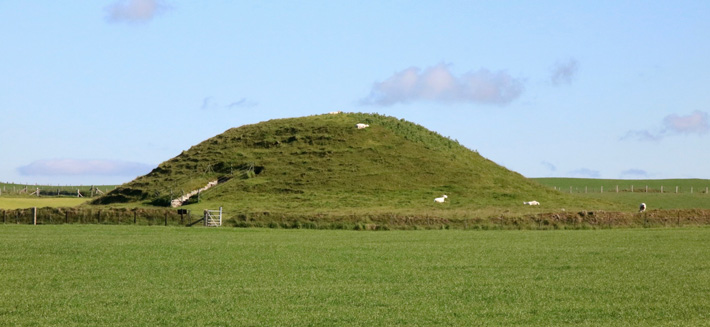5,000-year-old Neolithic Passage Tomb Studied in Scotland
The research was carried out at the communally-built dry-stone tombs in Maeshowe, led by Jay van der Reijden, a master student at the University of Highlands and Islands Archaeology Institute.
The tombs, referred to as ‘houses for the dead’, showed similar layouts to that of domestic houses.
Ms van der Reijden’s found the side chambers showed inverted architectural designs to give the effect that the chamber is within the underworld.

She said: “I’m delighted that my research, studying the order by which stones have been placed during construction, has been able to reveal novel results and that it is, therefore, able to make a real contribution to the field of archaeology.
“Visualise the wall-stones are like wallpapers, and when you repeatedly hang them upside down in distinct locations patterns become discernible. The swaps include the reversal of multiple architectural features normally placed on the right-hand side being on the left only inside the side chambers.
“The interpretation is that the side chambers are built to be within the netherworld, by the main chamber walls acting as membranes, separating this life and the next, and that the internal walling material is conceived to physically represent the underworld.”
Maeshowe, which is visible for miles around, dates from 2,700 BC and is one of the fascinating ancient monuments that make up the Heart of Neolithic Orkney World Heritage Site.
The tomb is accessed by a long, narrow passageway which leads into a large central chamber, with three side chambers, where the dead were laid to rest. The chambered tomb is aligned perfectly with the setting sun during the time around the winter solstice when it shines deep into the passageway and illuminates the rear wall of the main chamber.
Visitors to Maeshowe will also see Viking-era graffiti in the central chamber, left by a group of Norsemen who broke into the tomb to take shelter one night during Christmas 1153.
The men were led by Earl Harald through the snow from Stromness to the parish of Firth.
The 30 inscriptions found in Maeshowe, make it one of the largest, and most famous, collections of runes known in Europe and can be viewed by torchlight.
The latest research will be published Cambridge University’s Archaeological Review, which is due out by the end of the year.
Nick Card, excavation director of the Ness of Brodgar, said, “Despite being a focus of attention since its first modern-day entry over 150 years ago, the iconic Maeshowe continues to reveal its secrets through careful and considered study.
This study offers new ways of approaching and understanding the construction and use of not only this monument but has wider implications for the study of Neolithic stone-built monuments and the society that constructed them.”





